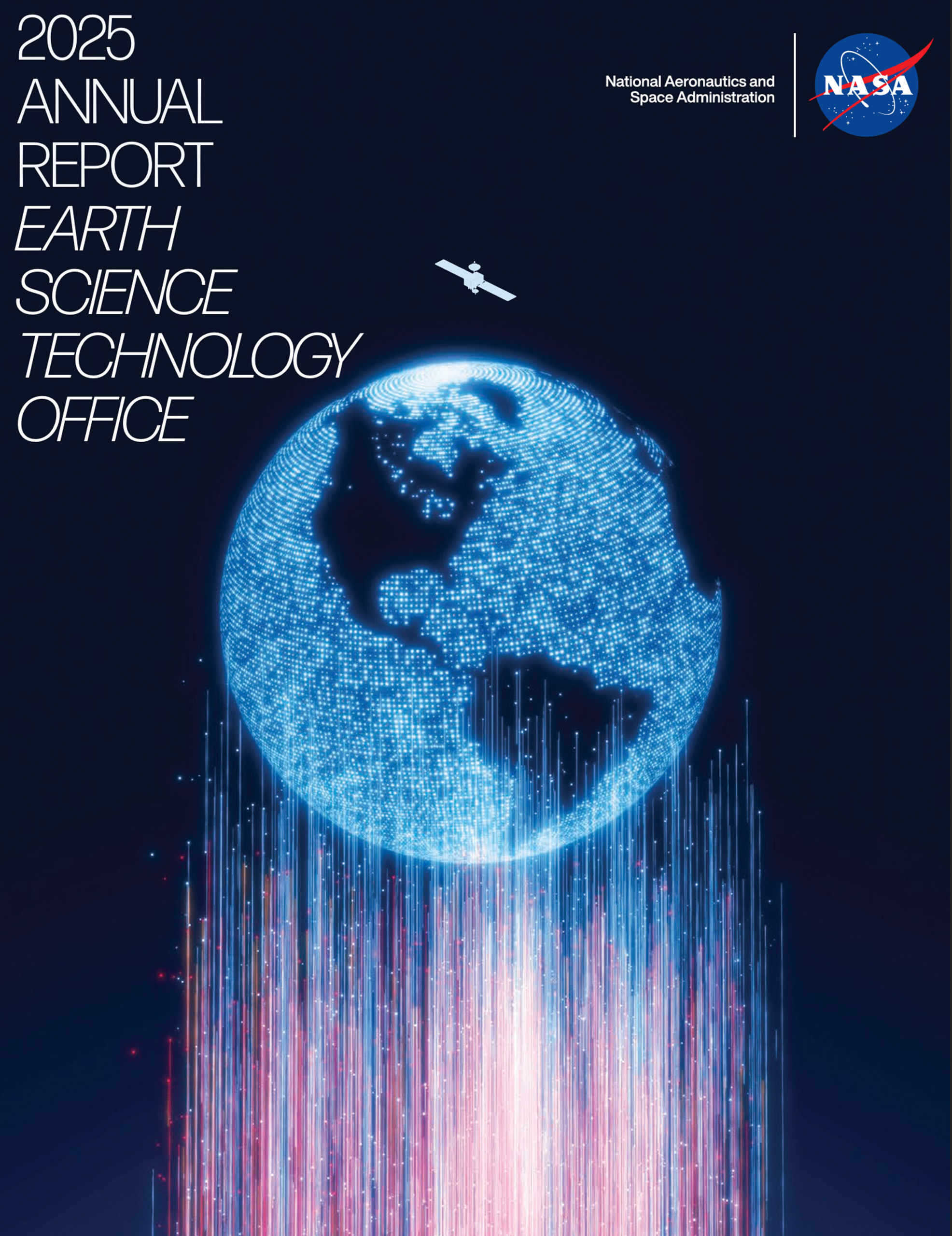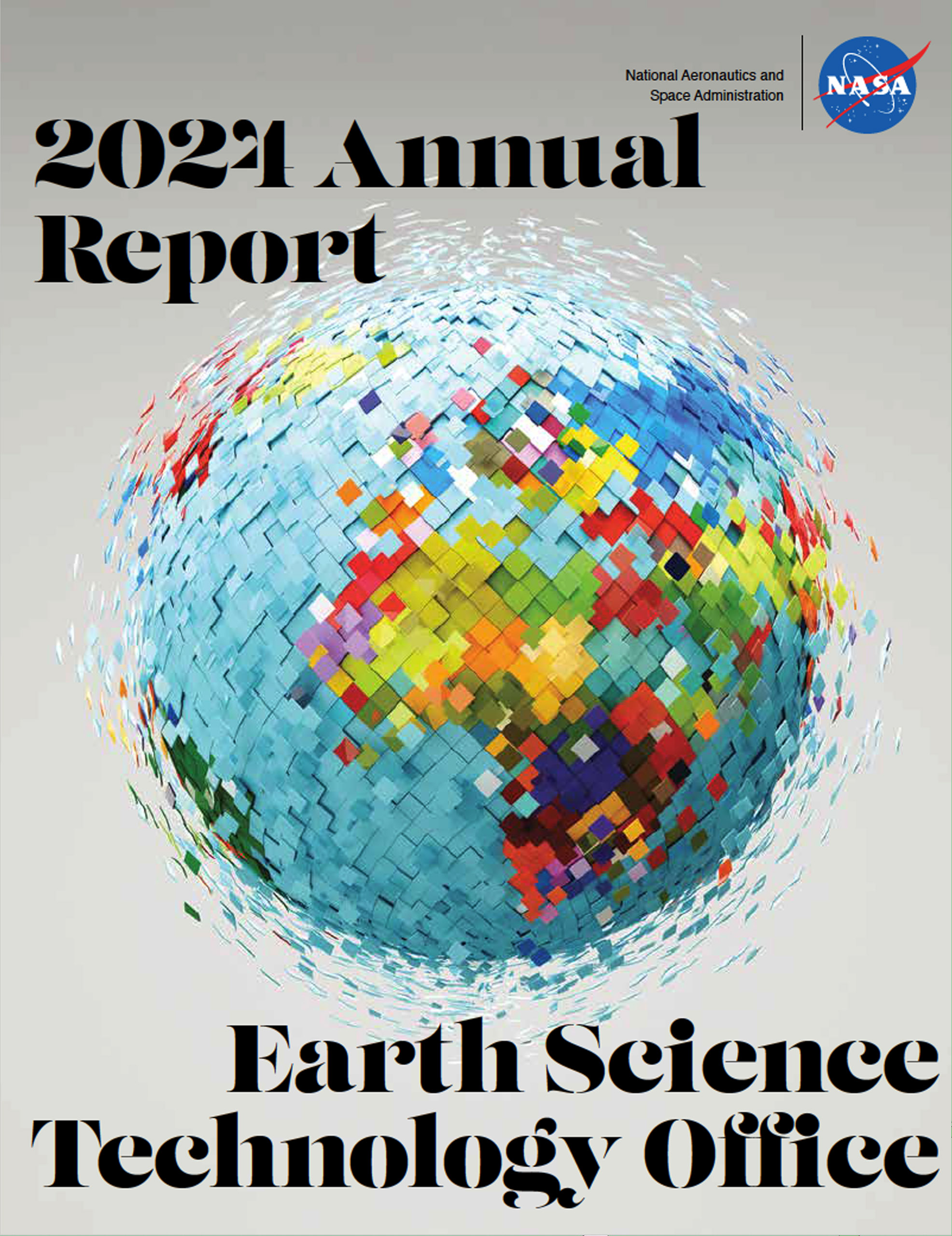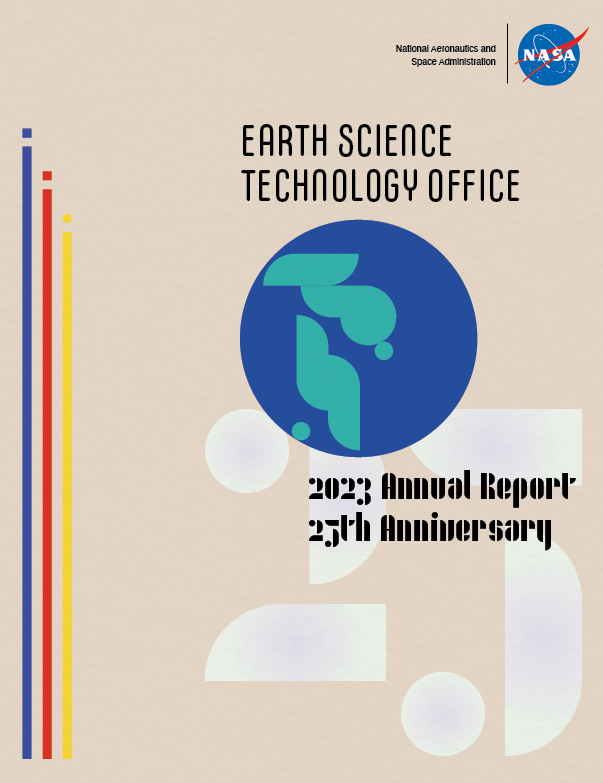About NASA's Earth Science Technology Office
2025 NASA EARTH SCIENCE TECHNOLOGY FORUMAs the technology program within NASA’s Earth Science Division (ESD), ESTO funds new technologies that can improve Earth science research. We aim to help solve technological challenges inherent in space-based observations to better understand our planet’s dynamic, interrelated systems.
Through an open, competitive solicitation process, we provide grants to universities, corporations, and other institutions to explore new instrument designs and information systems. If you’re an investigator in need of funding, stay connected for updates on upcoming solicitations. If you’re an Earth science researcher in need of an enabling technology, explore our portfolio or contact us here.
25th Anniversary Project
March 15, 2023, marked ESTO’s 25th Anniversary. Throughout 2023, we highlighted some of the more notable technology successes from the program’s first quarter century.
Learn more here: 25 Years of ESTO Impacts
Earth Science Technology Forum
Annually, ESTO hosts the Earth Science Technology Forum (ESTF), a gathering of principal investigators, scientists, engineers, and innovators to showcase the current advances for Earth science technologies. Click the images below to see proceedings and work presented from previous ESTFs.
Our Team
As ESTO’s Associate Director, Mike Seablom crafts technology roadmaps for fulfilling high-priority Earth science requirements, as defined by NASA’s Earth Science Division and the National Academies’ Decadal Survey, and coordinating related efforts with NASA field centers and other federal agencies. He holds a Bachelor of Science degree in Meteorology from Florida State University, a Master of Science degree in Atmospheric Science from Purdue University, and a Master of Business Administration in Management of Technology from Georgia Tech.
Elizabeth “Betsy” Forsbacka joined ESTO in 2024 as the Deputy Associate Director and brings a wealth of experience managing large, complex science instruments and engineering efforts, including the Roman Space Telescope and the Thermal Infrared Sensor (TIRS) on Landsat 8. Betsy has also worked at NOAA, the Oak Ridge National Lab, and the Department of Defense. She holds a Bachelor of Science degree in Electrical Engineering from the University of Florida and two Master’s degrees – Electrical Engineering from The George Washington University and Materials Science from the University of Maryland.
Sachidananda Babu manages the Sustainable Land Imaging – Technology program and In-Space Validation of Earth Science Technologies Program. He joined ESTO in 2016. He strives to ensure that future Landsats, jointly run by the U.S. Geological Survey and NASA, incorporate the latest technology to monitor changes on Earth. He also ensures that tiny, new technology can be tested on small satellites, like CubeSats, to reduce the overall risk of expanding these new technologies into full fledged Earth observing missions. He has an M.S. in Physics from the University of Mumbai and an M.S. in Electrical and Computer Engineering from George Mason University.
Amber Emory manages the Decadal Survey Incubation Program, which accelerates technologies dedicated to observing two key targeted observables: Planetary Boundary Layer and Surface Topography and Vegetation. She also supports the Instrument Incubation Program and InVEST program, and helps run solicitations for new project proposals. Amber has a Ph.D. in wind science and engineering from Texas Tech University and M.S. in atmospheric science from Texas A&M University.
At the helm of the Instrument Incubator Program is Parminder Ghuman. Parminder joined the ESTO team in 2004. He aims to help nurture groundbreaking new ideas and turn them in to validated demonstrations that could operate in space. Parminder graduated from Johns Hopkins University with an M.S. in Applied Physics, George Washington University with an M.S. in Electrical and Electronics Engineering, and North Carolina A&T State University with a B.S. in Electrical and Electronics Engineering.
Eastwood Im is an ESTO Associate based at NASA’s Jet Propulsion Laboratory. He manages projects in the IIP, ACT, InVEST, AITT and SLI-T programs. His expertise is on spaceborne meteorological radar science remote sensing and radar design. He was the first instrument architect of the multifunctional radar for the Cassini Mission to Saturn during the pre-project phase (1987 – 1991), and went on to become the system engineer of that instrument until its launch in 1997. He was the Instrument Manager of the CloudSat Mission between 1999 and 2006 developing the first spaceborne W-band radar which has just completed its 14th year of operation in June 2020. Eastwood has a Ph.D., M.S., and B.S. in Electrical Engineering from the University of Illinois at Urbana-Champaign, and is an IEEE Fellow.
April Jewell is an ESTO Associate based at NASA’s Jet Propulsion Laboratory, where she is a member of the Advanced Detectors and Nanomaterials Group. April uses her background in ultraviolet and visible detector technology development and infusion to manage projects in ESTO’s IIP, ACT, and DSI program areas. April earned her B.S. degree in Chemistry from George Washington University, and her Ph.D. in Chemistry from Tufts University.
Teresa Kauffman serves as the ESTO Operations Officer (OO). In her role as OO, she coordinates ESTO’s solicitations and ensures ESTO’s selection process is efficient, fair, and transparent. She also works with ESTO leadership to streamline ESTO’s business practices, maximizing the amount of technology development her teammates can accomplish. Teresa holds a B.S. in Finance from the University of Maryland, College Park.
To ensure ESTO’s investments are relevant and received both within and beyond NASA, Philip Larkin manages ESTO’s Advanced Planning efforts. Philip joined the ESTO team in 2003 and leads ESTO’s communications and outreach activities, internal reporting efforts, and early career solicitations, and he serves as liaison to NASA’s Earth Science Research and Analysis Program. He holds an M.S. certificate in Science Writing from Johns Hopkins University and a B.S. in Chemistry from the University of Maryland College Park.
Keith Murray is an ESTO Associate based at NASA’s Langley Research Center. He manages projects in the Instrument Incubation Program, Advanced Component Technologies program and InVEST program. His expertise is in active optical systems where he spent his early career developing novel solid-state lasers for remote sensing applications receiving multiple patents. He has worked on many NASA airborne and space instruments for Earth Science in both technical and managerial roles. Keith has a B.S in Applied Physics from Christopher Newport University and a M.S. in engineering Management from The George Washington University.
Nikunj Oza is an ESTO Associate based at NASA’s Ames Research Center. He manages projects in the Advanced Information System Technology program. His expertise is machine learning, data mining, anomaly detection, ensemble learning and applications of machine learning to aeronautics and Earth science. Nikunj has a Ph.D. and M.S. in Computer Science from the University of California at Berkeley and a B.S. in Mathematics with Computer Science from the Massachusetts Institute of Technology.
Laura Rogers is an ESTO Associate based at NASA’s Langley Research Center. She manages projects in the Advanced Information System Technology program. Her expertise is in systems engineering and complex system design. Prior to joining NASA, Laura served as a UH-60 Blackhawk maintenance test pilot and operational test manager in the U.S. Army. She has a B.S.E. in Mechanical Engineering from the University of Michigan and a M.S. in Coastal Dynamics from the University of North Carolina.
Chris Schultz is an ESTO Associate based at NASA’s Marshall Space Flight Center, where he works as a Research Scientist within the Earth Science Branch. A meteorologist, Chris leads investigations dedicated to studying how and why lightning forms, as well as the atmospheric conditions that lead to severe weather. Chris received a B.S. in Atmospheric Science from the University of Missouri, an M.S., and a PhD in Atmospheric Science from the University of Alabama in Huntsville.
Ben Smith is an ESTO Associate at NASA’s Jet Propulsion Laboratory where he manages projects for the Advanced Information System Technology program. Ben has expertise in autonomous systems, machine learning, and data science, and he holds a Ph.D. in Computer Science from the University of Southern California.








